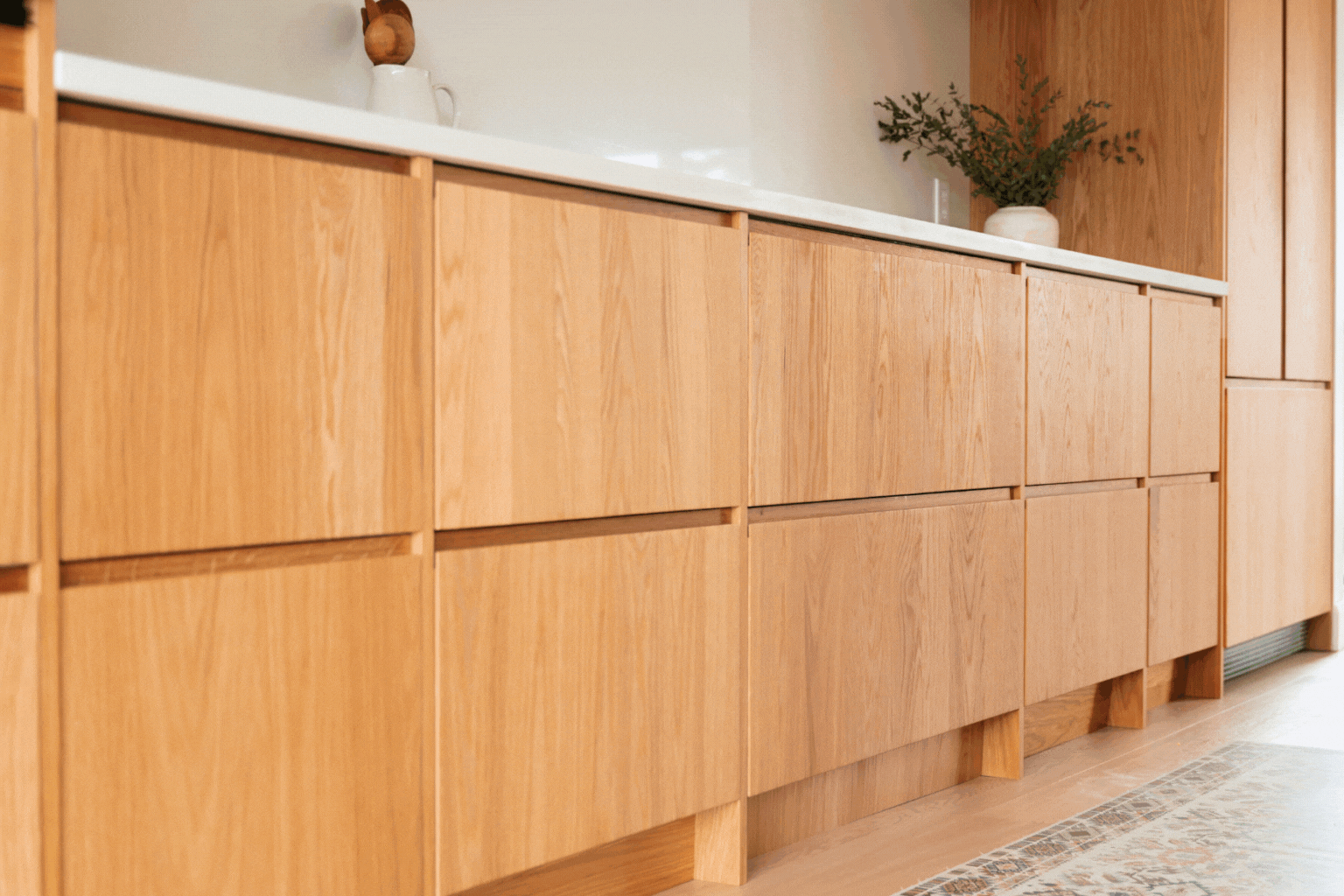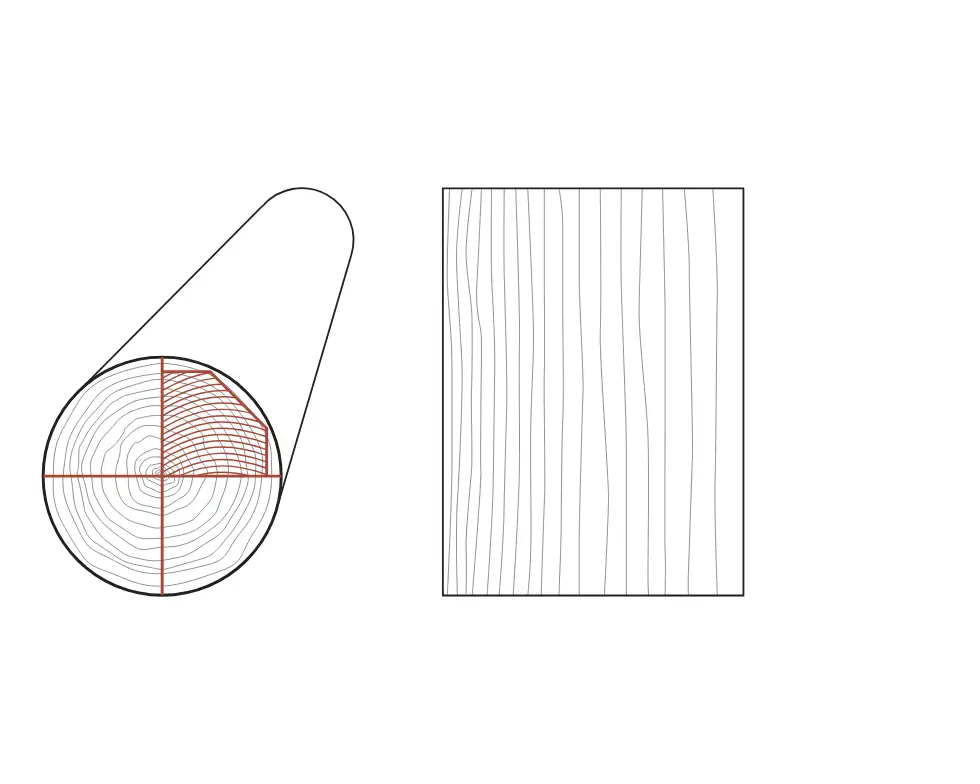
Rift Cut consists of sawing the wood at a specific angle, almost perpendicular to the growth rings. This technique produces a straight, uniform grain with minimal variation and virtually no visible knots. Clean and refined, this look is often associated with mid-century design.
- Visual appearance: fine, regular lines; very clean and understated.
- Advantage: a contemporary, minimalist look, perfect for modern kitchens where uniformity and clean lines are desired.
- Particularity: this cut maximizes wood stability and reduces the risk of warping.
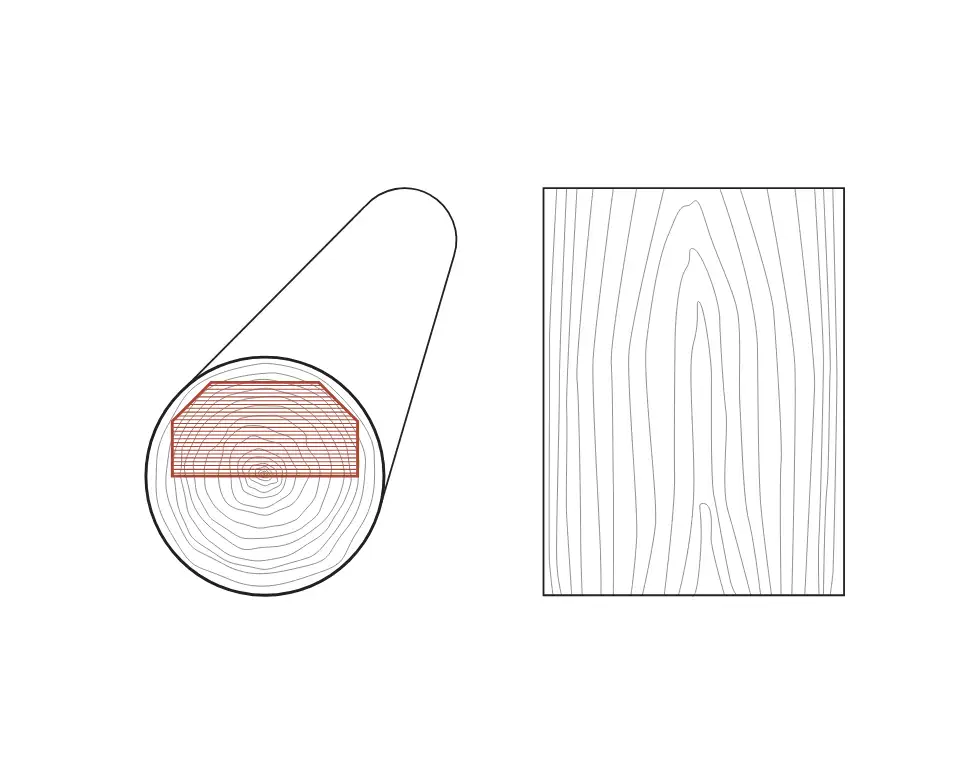
Plain Cut (also called flat cut or plank cut) is the most common way of sawing boards, cutting across the growth rings. This method brings out oak’s natural patterns: knots and grain become more visible, with tonal variations and stronger contrasts. The result is warm and authentic, often associated with Scandinavian design.
- Visual appearance: a richer, more organic, and expressive look.
- Advantage: each panel is unique, adding character and warmth to the overall design.
- Particularity: ideal for those who want to showcase the authentic, lively nature of the wood.
How to Choose?
Rift Cut is ideal for those who prefer a modern, discreet, and linear style, while Plain Cut appeals to those who appreciate a natural, warm, and textured look. In both cases, subtle variations inherent to wood add character and make each project unique. For a more elevated and harmonious result, the grain can also be aligned (“grain match”) with either cut. This way, you enjoy the durability and timeless beauty of White Oak, with a distinct personality depending on the cut you choose.

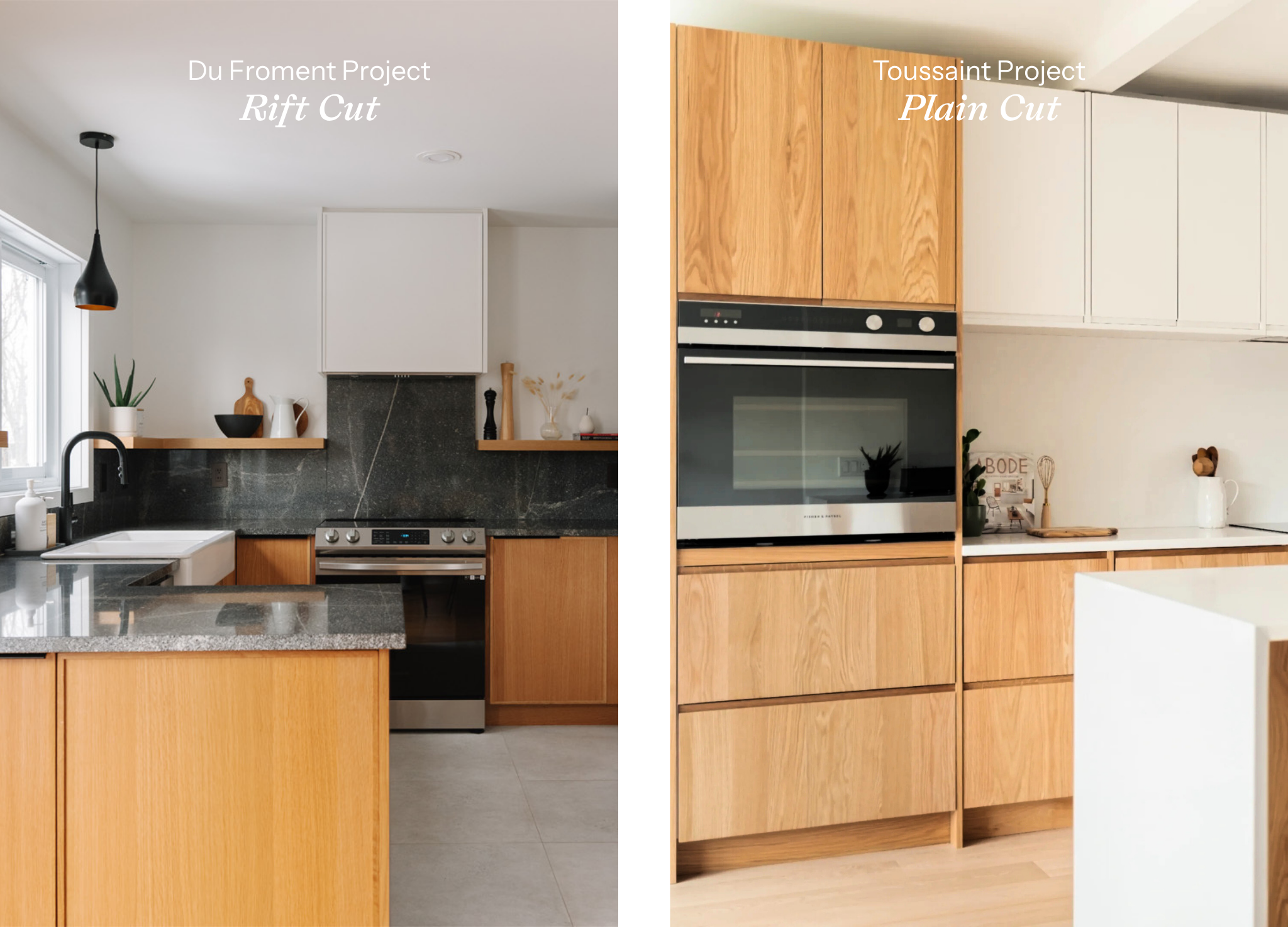
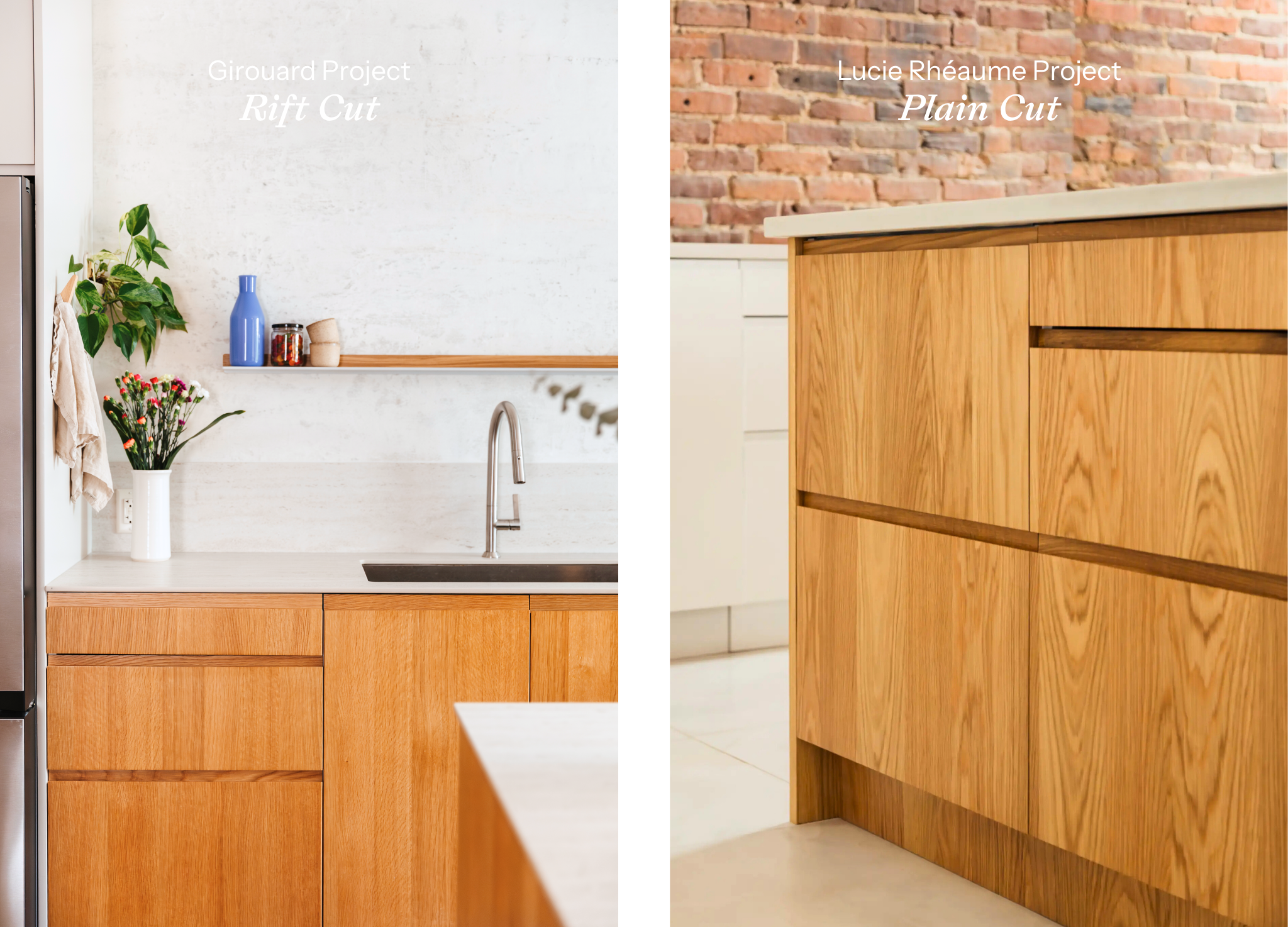

Please note that the photos shown are for reference only. As a natural material, wood has its own variations, making each panel unique in character and style.



